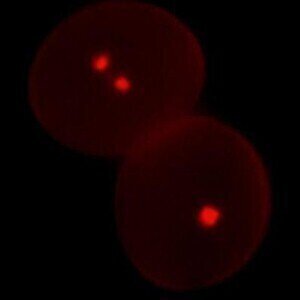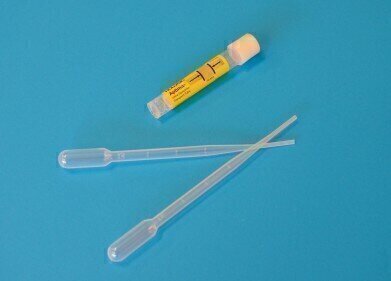Electrophoretic Separations
New power given to fluorescence microscopy
Nov 07 2012
The capability of fluorescence microscopy to study labelled structures like cells has now been given a boost to supply greater spatial and temporal resolutions for the first time.
A new method developed by the US's University of Illinois researchers Gabriel Popescu and Ru Wang, allowed them to study the crucial process of cell transport dynamics at numerous spatial and temporal scales and expose properties of diffusive and directed motion transport in living cells.
The new technique, called dispersion-relation fluorescence spectroscopy (DFS), tags specific molecules with a fluorophore whose movement creates "spontaneous fluorescence intensity fluctuations" that are examined to measure the "governing mass transport dynamics", explained the scientists.
Mr Popescu leads the Quantitative Light Imaging Laboratory at Illinois' Beckman Institute, while Mr Wang of the lab is first author on the paper reporting the method in Physical Review Letters.
More comprehensive than using just fluorescence microscopy, the ability to study the diffusive and directed transport characteristics of cellular dispersion via a broad variety of spatial and temporal scales gives more data than present methods.
For example, fluorescence correlation spectroscopy (FCS) is broadly utilised for examining molecular transport and diffusion coefficients at a fixed spatial scale.
Mr Popescu said the multiplicity of scales the method gives over practices like fluorescence correlated spectroscopy makes all of the difference.
Researchers interested in the basic science of cellular dynamics, along with those who work in biomedical research (such as in the analysis of a drug's effect on the body) would find this knowledge particularly valuable.
This technique can be utilised with current fluorescence microscopy methods.
"I think that the beauty of this method is that you can use a commercial fluorescent microscope that is found everywhere to collect and analyse data in a very simple way. You don't need complicated expertise. Everyone can use it," said Mr Wang.
Posted by Fiona Griffiths
Digital Edition
Chromatography Today - Buyers' Guide 2022
October 2023
In This Edition Modern & Practical Applications - Accelerating ADC Development with Mass Spectrometry - Implementing High-Resolution Ion Mobility into Peptide Mapping Workflows Chromatogr...
View all digital editions
Events
ACS National Meeting - Fall 2024
Aug 18 2024 Denver, CO, USA
Sep 04 2024 Chiba, Tokyo, Japan
Sep 04 2024 University of Warwick, Coventry, UK
Sep 10 2024 Rockville, MD, USA
Plastics Recycling World Expo Europe
Sep 11 2024 Brussels, Belgium














